By Tiago Forte of Forte Labs
The history of employment can be summarized as “companies vs. employees.”
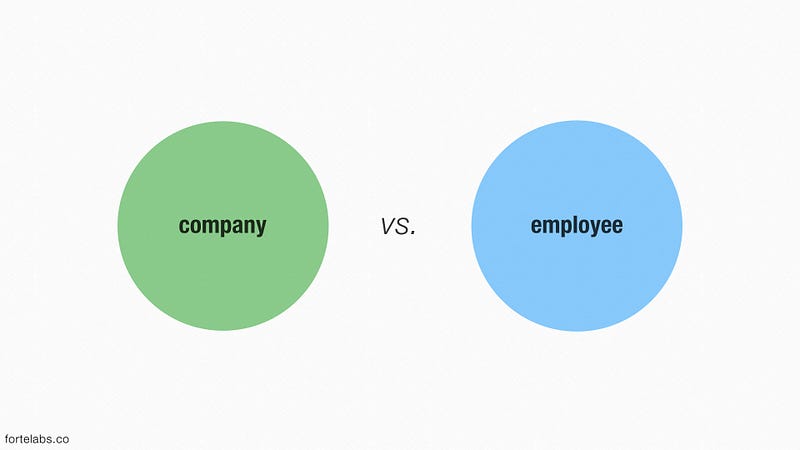
This tug-of-war was always viewed as zero sum: any gain by labor was, by definition, a loss for management and shareholders, and vice versa. This mentality is captured in the saying:
“Employees work just enough to not be fired, and employers pay them just enough to not quit.”
Thus the core assumption of modern employment is that, no matter how inspirational the organization’s mission or how engaged and happy their employees…
The interests of employees and employers are fundamentally opposed.
This tension was resolved until recently by making the work itself a common ground:

The only goal the company and the employee had in common was getting the work done. This mutual interest allowed them to call an uneasy truce, temporarily setting aside their differences in the pursuit of profit.
The deal was as follows: employees agreed to give up most of the upside of their work — their best ideas, their best efforts, their passion and energy and creative breakthroughs — in return for protection from the downsides, in the form of a steady paycheck, paid sick leave, and a pension at retirement.
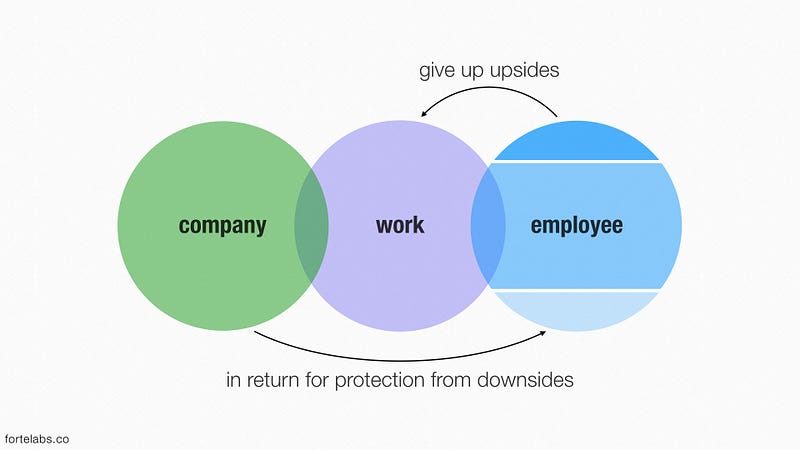
In other words, your employer agreed to pay you the same for your worst work as your best work, averaging out somewhere in the middle. Career advancement consisted not of breakout performance, but of consistently getting your average just a little higher than those around you.
The problem is not that this deal has completely broken down (it wasn’t that great of an arrangement to begin with).
The real problem is that we continue to use the system built on that original outdated assumption. The foundation is broken and we wonder why the house is collapsing.
With the work itself as the overriding priority, employees are encouraged to leave most of themselves at home. Their health, their hobbies, their relationships, their mental and emotional wellbeing — these are literally outside the scope of work. Unfortunately, these are the very things from which creativity springs.
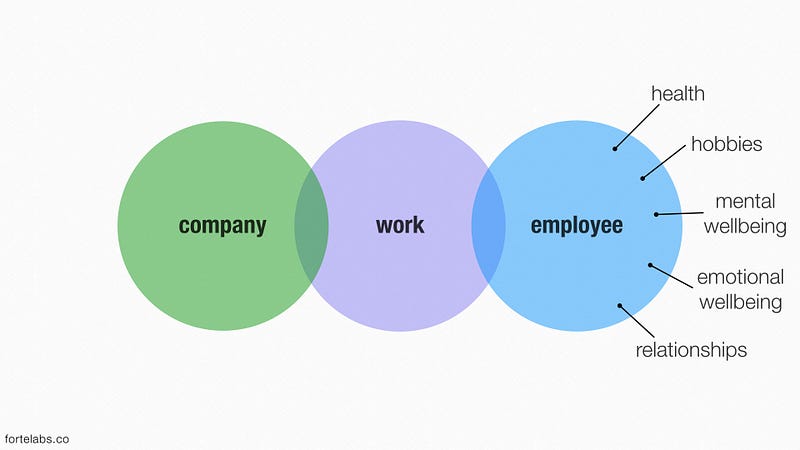
And this cuts both ways. Employees are encouraged to see the relationship as transactional, so they do, ignoring anything that isn’t explicitly in their job description: contributing to a healthy culture, cross-functional responsibilities, mentorship and leadership, long-term strategy. Unfortunately, these are the very things that long-term survival depends on.
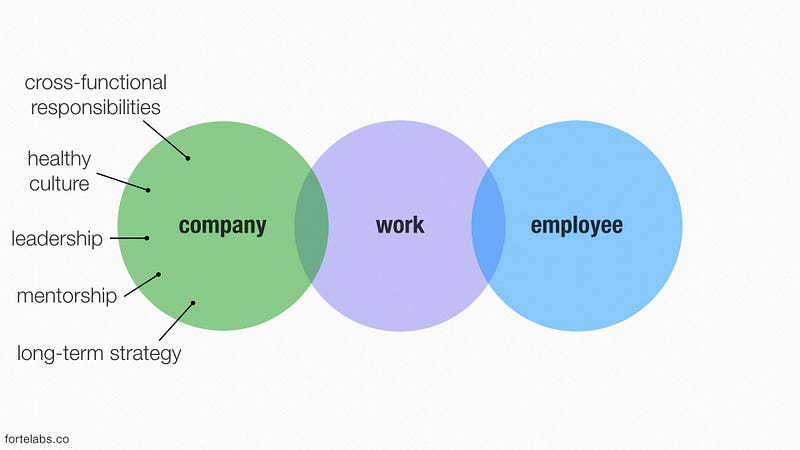
Companies realize this, and they’re making an effort to fix it. But somewhere along the way, innovation became a matter of rearranging office furniture. Cubicle farms have given way to vast open floor plans, prolific Post-Its, beanbag chairs, and ping-pong. Startups are doing it, so it must be innovative, right?
But the truth is, both this “new” philosophy and the “old” philosophy that preceded it share that same old core assumption: that the interests of employees and employers are fundamentally opposed. They are both an attempt to induce a certain kind of output with the right “mix” of external cues and explicit rewards. You only feel the need to induce something if you don’t believe it will arise naturally.
In a way, the current generation of utopian workspaces is even more dystopian than the previous one: now what companies want is not just your labor, but the very essence of what makes you human — your imagination, your dreams, your dynamism, your spirit.
Questioning the foundation
The only way forward is to revisit the core assumption that underlies it all. To renegotiate the contract employees have had with their employers since the beginning of industrialization. We have to question the belief that the activity we will spend most of our years performing — literally the work of our lives — is fundamentally adversarial.
What if, instead, we chose to believe that the interests of employees and employers were naturally aligned? Instead of trying to coerce employees into accepting the mission, values, and goals of the company, as if they don’t have their own already, we could map each of the company’s interests to a corresponding and complementary human interest. We could make the business a platform for each person to reach their individual goals, harnessing that source of energy to reach the business’ goals as a byproduct.
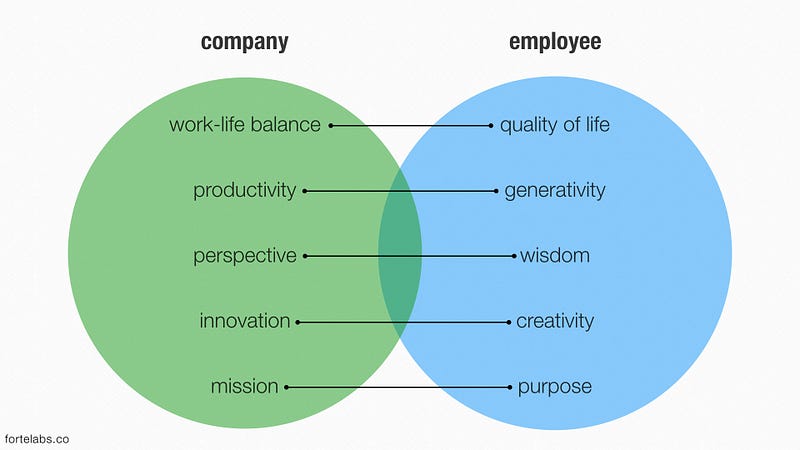
To accomplish this, we have to switch the right-hand side of the equation: instead of work being the common ground between companies and employees, employees must be seen as the common ground between companies and work.

This change puts people at the center of the equation, where they belong. It acknowledges that companies don’t have a purpose; they aren’t innovative; they don’t even exist — people do.
This people-centered equation helps us understand the relationship between various forces we know are important, but are hard to connect in the real world: culture, productivity, personal growth, innovation, and leadership.

The purpose of companies is to build a culture that supports their people. Not to formulate a 5-year plan and dictate every last task to every person. Not to codify an abstract Mission and ram it down everyone’s throats. And definitely not to force everyone to “be creative,” as if creativity is programmable like a computer.
The job of employees is to use that culture as a platform to perform their work as productively and creatively as possible. A safe and supportive culture (with just an edge of competition) allows for the learning, risk-taking, and experimentation that are necessary for meaningful advancements in actual, day-to-day productivity.
Each contribution comes full circle. We’re not investing in culture and productivity just for fun, after all:

The purpose of the work is to serve as a vehicle for learning and personal growth for each employee, however they define it. In other words, having a kid counts just as much as learning a new skill. This is why maternity/paternity leave and related policies are just as important as productivity initiatives — they tie together the message that work is about holistic growth.
It’s easy to lose sight of sometimes, but work is uniquely suited to all aspects of human self-actualization, as Edmund Phelps explains in Mass Flourishing (affiliate link):
- Work is a constant source of new challenges to feed people’s hunger for learning
- Work provides a stream of opportunities for people to inject their creativity and judgment into the process (self-expression), resulting in a greater sense of accomplishment (self-affirmation)
- Work provides a forum for visible accomplishments, critical for social learning, status, and prestige.
- Work can provide the freedom to make decisions and prove one’s self-sufficiency, which is important to self-worth
- Work can provide a voyage of exploration (a “career”) while mitigating many of its risks (self-discovery)
The cycle culminates in employees’ ultimate contribution to the company: sustainable, long-term innovation. Can you see why it’s impossible to proceed directly to innovation? Why it’s futile to launch one innovation initiative after another without attending to the fundamentals?
Without a culture where people feel safe and heard, without a high-performance workforce proactively improving its productivity, without the learning and growth that people value much more than a salary, innovation cannot grow. And if you try and force it anyway, you’ll strip the soil for years to come.
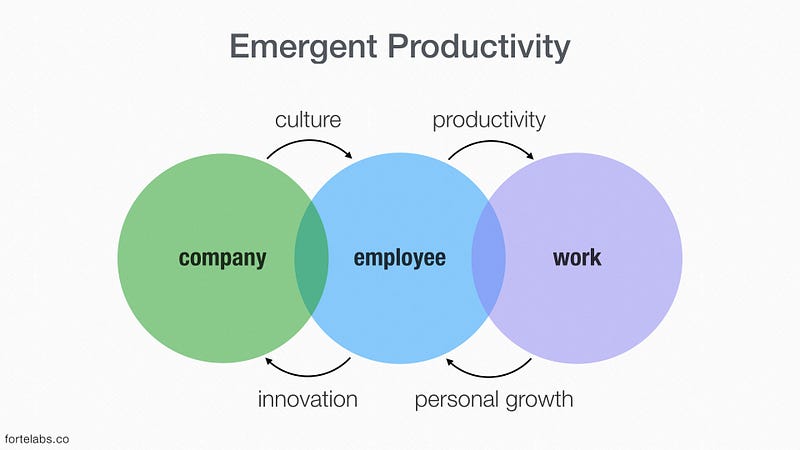
Innovation is an emergent phenomenon, arising unpredictably from the interactions between the building blocks of culture, productivity, and personal growth.
The role of leaders
There’s one remaining piece: where do vision and leadership fit in here? You know, what senior executives spend most of their time on. Is the purpose of the company nothing more than daycare for wide-eyed dreamers? Should the office be nothing more than a blank canvas for employees to finger-paint on?
Employees and employers are naturally aligned, but this alignment is unstable. It is in constant danger of splintering under the daily barrage of demands, responsibilities, crossed signals, and bruised egos. Like a long line of railroad cars thundering across a bridge, quickly widening the tiniest crack into a catastrophic breach.
The purpose of leaders is to preserve and refine this alignment, to help people align with their work, and the company to align with its people. Notice the order there. First, you help people identify their goals; then you identify the company’s goals; finally, you help everyone manage the gaps and leverage the overlaps.
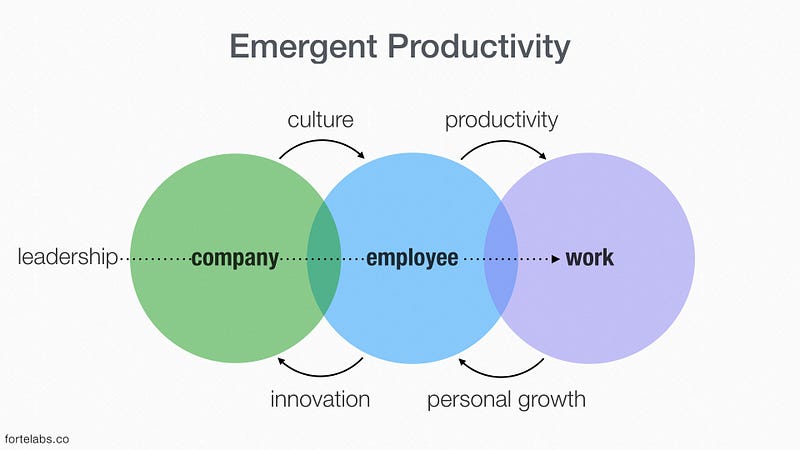
Follow us for the latest updates and insights around productivity and Building a Second Brain on Twitter, Facebook, Instagram, LinkedIn, and YouTube. And if you're ready to start building your Second Brain, get the book and learn the proven method to organize your digital life and unlock your creative potential.
